This article was medically reviewed by Sarah Gehrke, RN, MS. Sarah Gehrke is a Registered Nurse and Licensed Massage Therapist in Texas. Sarah has over 10 years of experience teaching and practicing phlebotomy and intravenous (IV) therapy using physical, psychological, and emotional support. She received her Massage Therapist License from the Amarillo Massage Therapy Institute in 2008 and a M.S. in Nursing from the University of Phoenix in 2013.
There are 7 references cited in this article, which can be found at the bottom of the page.
wikiHow marks an article as reader-approved once it receives enough positive feedback. This article received 24 testimonials and 82% of readers who voted found it helpful, earning it our reader-approved status.
This article has been viewed 1,493,562 times.
Everyone seems to have their own trick for removing a tick. Contrary to popular belief, holding a match to the tick, suffocating it with petroleum jelly, or poisoning it with nail polish only makes it burrow in more deeply. The correct solution is also the easiest: simply pull it off your skin. Follow these easy steps for removal and the tick will soon be a distant memory.
Steps
Using a Pair of Tweezers
-
1Find the head of the tick. If you look closely, you'll see its mouth attached to the skin, with the body resting behind it.
-
2Grasp the tick as close to the skin as possible with a pair of tweezers. Use tweezers with fine tips, rather than blunt ones, to make sure you are able to grasp the tick tightly.[1]
- Don't try this with your fingers. You won't be able to get a good, tight grip on the tick.
- Make sure you're gripping the tick's head. Get the tweezers as close to the mouth of the tick as possible.
- Do not grasp the tick's body. This will cause it to inject saliva or blood into your skin and increase the chances of transmitting a disease.[2]
Advertisement -
3Pull firmly and steadily outward. The tick's mouth will release the skin. Do not twist, jerk or wiggle the tweezers as you pull, or the tick's mouth parts will remain attached to the skin. It's not uncommon for the skin to also pull up as the tick detaches, much like it does when you pluck a stray hair.
- If the mouth parts remain attached, attempt to remove them with the tweezers. If they're buried in the skin, you can simply let the skin heal, checking it from time to time to make sure it doesn't become infected.[3]
-
4Wash with warm water and soap. You can also use rubbing alcohol, hydrogen peroxide, or iodine. Clean both the bite and your hands thoroughly.[4]
-
5See a doctor if you have trouble removing the tick. Some ticks are so small that they're difficult to remove using this common method. A doctor will be able to remove the tick for you.
Using a Piece of Floss
-
1Cut a length of floss. Choose a thin, unwaxed floss, or another type of thin string. This does the trick if you don't have tweezers on hand.[5]
-
2Loop the string around the tick's head. The string should lie as close to the skin as possible.
-
3Tighten the loop around the head. Use both hands to pull the floss taut.
-
4Pull the ends of the string upward in a slow, steady motion. The tick's mouth will release the skin.
-
5Wash with warm water and soap. Clean both the bite and your hands. Rubbing alcohol, hydrogen peroxide, or iodine can also be used to help prevent infection and the spreading of tick-borne disease.
Using a Credit Card
-
1Cut a V-shape into the card. Using a pair of scissors, cut a small V-shape along the edge of the card. It should be large enough to grab the tick, but not so large that the tick and slip through.[6]
-
2Slide a credit card next to the tick's head. Slide the credit card between your skin and the tick, aligning the V-cut with the tick's head.[7]
-
3Firmly hold the back of the tick in place.
-
4Slide the credit card along your skin and under the head. After a few tries, the tick should come out whole.
Following Up
-
1Dispose of the tick properly. The tick will probably still be alive when you remove it. You can soak it in rubbing alcohol or flush it down the toilet to prevent it from attaching itself to you or your loved ones.[8]
-
2Consider saving the tick for testing. If ticks in your area are known to frequently carry Lyme disease, you might want to save the tick in case you need to get it tested. Place it in a plastic food storage bag, seal the bag, then put it in the freezer. Find a lab that does tick testing and follow instructions for properly submitting the tick.
-
3Check the wound site for symptoms. In the weeks following the tick removal, check the site for signs that you may have contracted Lyme Disease or another tick-borne illness. you'll need to tell your doctor when you noticed the tick, when you removed it, and what subsequent symptoms you notice. If you notice the following symptoms developing, see a doctor immediately:[9]
- A fever and/or chills. This is a common symptom of tick-borne illnesses.
- Headaches and muscle aches.
- The tell-tale bulls-eye rash. This is a symptom of Lyme disease as well as Southern Tick-Associated Rash Illness (STARI). Red patches create a bulls-eye pattern around the site of the tick bite, so watch out for this.
- Any other type of rash. Rocky Mountain Spotted Fever (RMSF), also carried by ticks, can cause a rash that does not look like a bulls-eye to appear.
Expert Q&A
-
QuestionHow can I treat my dog for ticks?
 Sarah Gehrke, RN, MSSarah Gehrke is a Registered Nurse and Licensed Massage Therapist in Texas. Sarah has over 10 years of experience teaching and practicing phlebotomy and intravenous (IV) therapy using physical, psychological, and emotional support. She received her Massage Therapist License from the Amarillo Massage Therapy Institute in 2008 and a M.S. in Nursing from the University of Phoenix in 2013.
Sarah Gehrke, RN, MSSarah Gehrke is a Registered Nurse and Licensed Massage Therapist in Texas. Sarah has over 10 years of experience teaching and practicing phlebotomy and intravenous (IV) therapy using physical, psychological, and emotional support. She received her Massage Therapist License from the Amarillo Massage Therapy Institute in 2008 and a M.S. in Nursing from the University of Phoenix in 2013.
Registered Nurse The same methods mentioned above will work for any pet. If you need further assistance, call your vet and they can guide you through the process.
The same methods mentioned above will work for any pet. If you need further assistance, call your vet and they can guide you through the process. -
QuestionWhy can't I twist the tick when removing it?
 Sarah Gehrke, RN, MSSarah Gehrke is a Registered Nurse and Licensed Massage Therapist in Texas. Sarah has over 10 years of experience teaching and practicing phlebotomy and intravenous (IV) therapy using physical, psychological, and emotional support. She received her Massage Therapist License from the Amarillo Massage Therapy Institute in 2008 and a M.S. in Nursing from the University of Phoenix in 2013.
Sarah Gehrke, RN, MSSarah Gehrke is a Registered Nurse and Licensed Massage Therapist in Texas. Sarah has over 10 years of experience teaching and practicing phlebotomy and intravenous (IV) therapy using physical, psychological, and emotional support. She received her Massage Therapist License from the Amarillo Massage Therapy Institute in 2008 and a M.S. in Nursing from the University of Phoenix in 2013.
Registered Nurse More than a slight twist of the tick may cause the head of the tick to stay embedded in the skin.
More than a slight twist of the tick may cause the head of the tick to stay embedded in the skin.
Warnings
- Do not attempt to suffocate the tick with petroleum jelly. This makes the tick hold on to your skin more tightly.⧼thumbs_response⧽
- Do not try to remove a tick by holding a match to it; this causes the tick to burrow more deeply into your skin.⧼thumbs_response⧽
- Do not try to pull it off with your hands. It might leave the head embedded in your skin, which can lead to infection.⧼thumbs_response⧽
Things You'll Need
- Tweezers or string
- Cotton ball
- Rubbing alcohol
References
- ↑ https://www.cdc.gov/ticks/removing_a_tick.html
- ↑ https://www.ncbi.nlm.nih.gov/pubmedhealth/PMH0072424/
- ↑ https://www.cdc.gov/ticks/removing_a_tick.html
- ↑ http://www.cdc.gov/ticks/removing_a_tick.html
- ↑ https://canlyme.com/lyme-basics/tick-removal/
- ↑ https://www.ncbi.nlm.nih.gov/pubmedhealth/PMH0072424/
- ↑ https://www.ncbi.nlm.nih.gov/pubmedhealth/PMH0072424/
- ↑ http://www.health.harvard.edu/blog/matchless-strategy-for-tick-removal-6-steps-to-avoid-tick-bites-201306076360
- ↑ http://www.cdc.gov/ticks/symptoms.html
About This Article
The easiest and safest way to remove a tick is using tweezers. Grab the tick as close to the head as possible with the tweezers, right where it’s attached to your skin. Don’t squeeze with the tweezers or you could push the contents of the tick’s stomach into the wound. Swiftly pull the tick straight out of your skin and dispose of it in a sealed bag. You can also flush it down the toilet. Clean the bite with soap and water or rubbing alcohol. According to the Centers for Disease Control and Prevention, you should avoid using other remedies like heat, nail polish, or petroleum jelly to remove a tick. If you develop a fever or rash within a few weeks after removing the tick, make an appointment to meet with your doctor. Keep reading to learn tips from our medical reviewer on how to use floss to remove a tick!
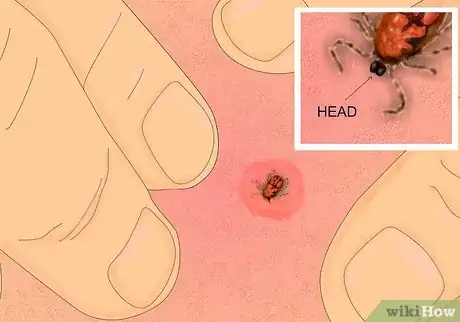
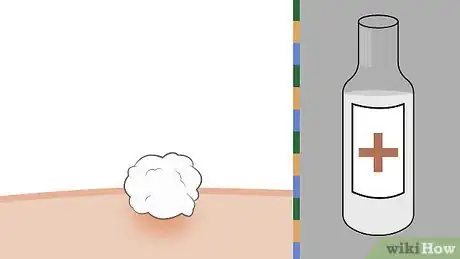

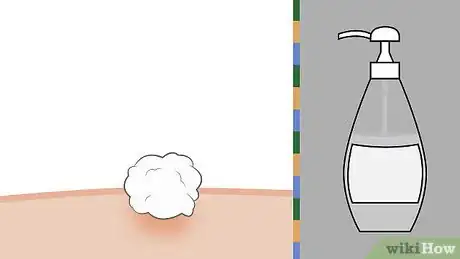
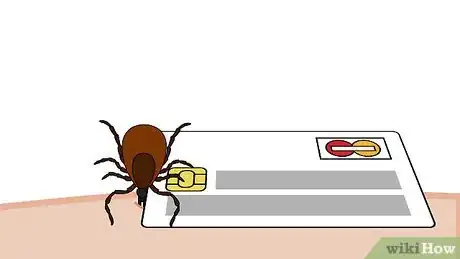
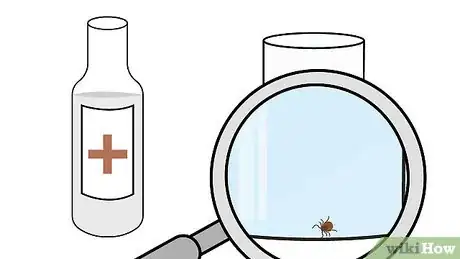
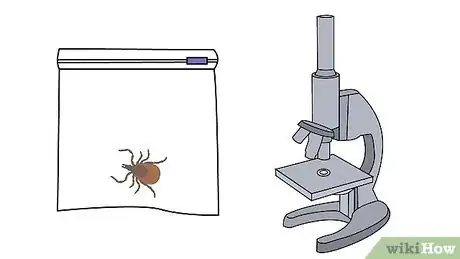
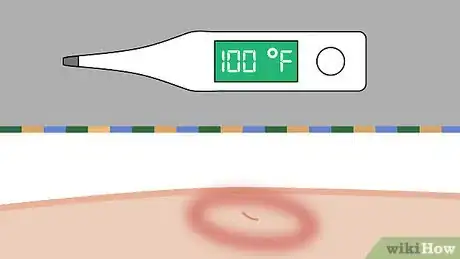

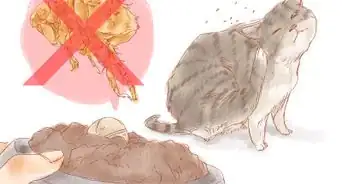

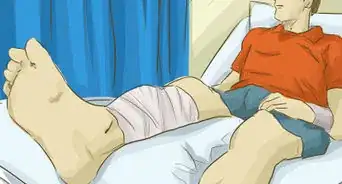
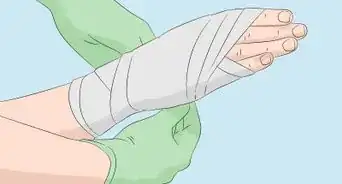



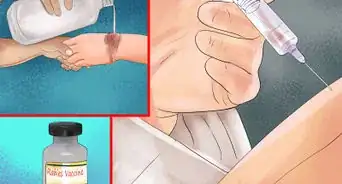


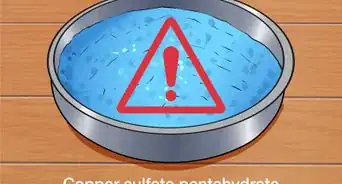













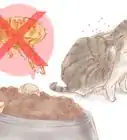





































Medical Disclaimer
The content of this article is not intended to be a substitute for professional medical advice, examination, diagnosis, or treatment. You should always contact your doctor or other qualified healthcare professional before starting, changing, or stopping any kind of health treatment.
Read More...